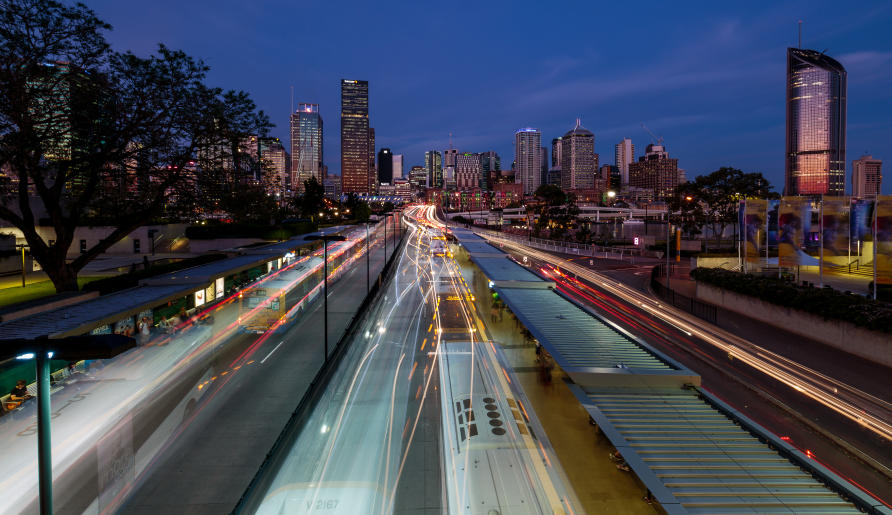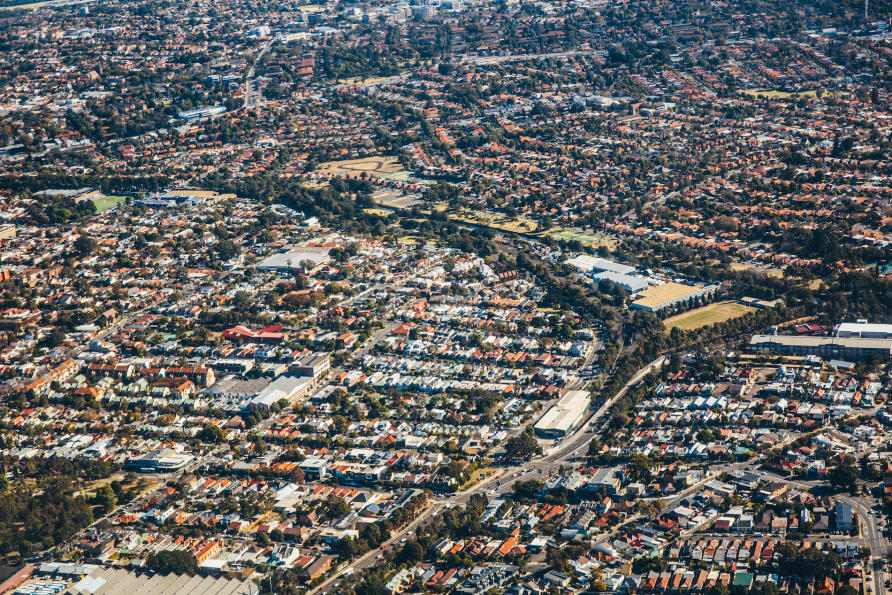Lost in transit

Commuters once had to avoid hitting each other in the face with newspapers, but now a podcast, or catching up with friends, or the world on our mobile phones are favourites pastimes.
And it’s a good thing too, as many of us having to spend longer travelling to and from work.

Commuting times have jumped 23 per cent between 2002 and 2017, and of Australia’s major cities, Brisbane has experienced the worst blow out in commuting time.
The HILDA (Household, Incomes and Labour Dynamics in Australia) Survey collected data on the amount of time Australians spend in a typical week on a number activities, including travelling to and from their work places.
It reveals that average commuting times have jumped 23 per cent between 2002 and 2017, rising from an averaged 3.7 hours per week to 4.5 hours a week. But it also shows that in a our major cities, the growth in commuting times shows some stabilisation since 2014.
Daily average commuting times
| Location | 2002 (minutes) |
2017 (minutes) |
Change |
|---|---|---|---|
| Sydney | 61 | 71 | +17 per cent |
| Melbourne | 59 | 65 | +12 per cent |
| Brisbane | 46 | 67 | +45 per cent |
| Adelaide | 45 | 56 | +26 per cent |
| Perth | 50 | 59 | +19 per cent |
| Tasmania | 43 | 42 | -2 per cent |
| Northern Territory | 29 | 35 | +19 per cent |
| Australian Capital Territory | 31 | 52 | +65 per cent |
Of Australia’s mainland capital cities, Brisbane has experienced the biggest increase in commuting times, putting it now ahead of Melbourne and only behind Sydney.
“Brisbane is now in the same league as Melbourne and Sydney, which from a commuter’s point of view, isn’t the company you want to be in,” says University of Melbourne sociologist and HILDA report co-author, Dr Inga Lass.
HILDA survey co-author, University of Melbourne economist Professor Roger Wilkins says the increases in commuting times in cities may reflect increasing road congestion on the back of increasing urban sprawl where people live further away from the CBD, but are still having to travel to work there.
“But interestingly, the biggest increases in commuting times were outside the capital cities, albeit off a lower base” he says.
For example, the biggest increase was recorded in Western Australia outside of Perth where commuting times rose 65 per cent to an average 43 minutes a day.
But from 2014, the HILDA data indicates a shift in Australian commuting patterns.
The rise in daily commuting times in major cities stabilises on average, with commuting times in Sydney unchanged, and continued rises in Brisbane, Perth, Canberra and Adelaide offset by a slight reduction in commuting times in Melbourne and Tasmania.

People with long commutes are generally less satisfied with their jobs.
But this finding may not be all good news, says Dr Lass.
“The stabilisation in average city commuting times may reflect people themselves changing their work patterns to limit their commuting times,” she says.
“Lengthy commutes have been associated with reduced worker well-being and negative family outcomes in many studies.
“Indeed, the HILDA data shows that people with long commutes are generally less satisfied with their jobs and are more likely to be looking for another job.”
For example, only 37 per cent of long commuters (those travelling for two hours or more a day) are still slogging out a long commute five years later.
That compares with people on short commutes of less than an hour day where 57 per cent are still taking short commutes five year later.
“It may be that what we are seeing is some people reaching a threshold when it comes to how long they are prepared to spend travelling to and from work, and then changing their behaviour,” Dr Lass says.
Transport planning expert Dr John Stone, at the University of Melbourne’s Faculty of Architecture, Building and Planning, agrees.
“Research has shown that even going back to the time before we had cars, the time people travel per day has remained stable. We need to prioritise time for eating, sleeping and socialising so we tend to find that, in many places, average travel time has remained around one hour.
“Times beyond this are an increasing source of social and financial stress.”

The upward pressure on commuting times partly reflects the movement of affordable housing away from city centres.
Dr Stone notes that the rise in work travel time since 2002 isn’t surprising given much of our affordable housing is still located away from the concentrations of employment.
“What we see in the data is journey time broadly reflecting profession. Sales, health and education jobs are more commonly located in the suburbs, and so have the potential for shorter travel times. Commercial and technical jobs are concentrated in CBDs and other centres increasingly remote from where many people live.”
“He says that the main message from the HILDA data seems to be that if we continue to build cities the way we have in the last 50 years, we will have the same commuting and congestion problems.
However, he says, some international cities have successfully bucked the trend of increased work commuting time.
In the Canadian city of Vancouver, there has been a significant rise in the population, but the city was still able to achieve a reduction in average travel times.
This was done by concentrating jobs in accessible locations, building higher density housing that was attractive to families and speeding up public transport relative to the car; the congestion didn’t go away but people could choose an alternative.
“In Australian cities and regions, we need to tip the balance so that public transport becomes faster than traveling by car.
“We are building big public transport projects and planning more, but we need attractive and affordable housing close to these routes. Then we can start to reverse the trends that decades of road-building have created.”
This article was published by Pursuit.
Dr Nerissa Hannink is a Senior Media Advisor at the School of Science, Veterinary and Agricultural Sciences at Melbourne University.










